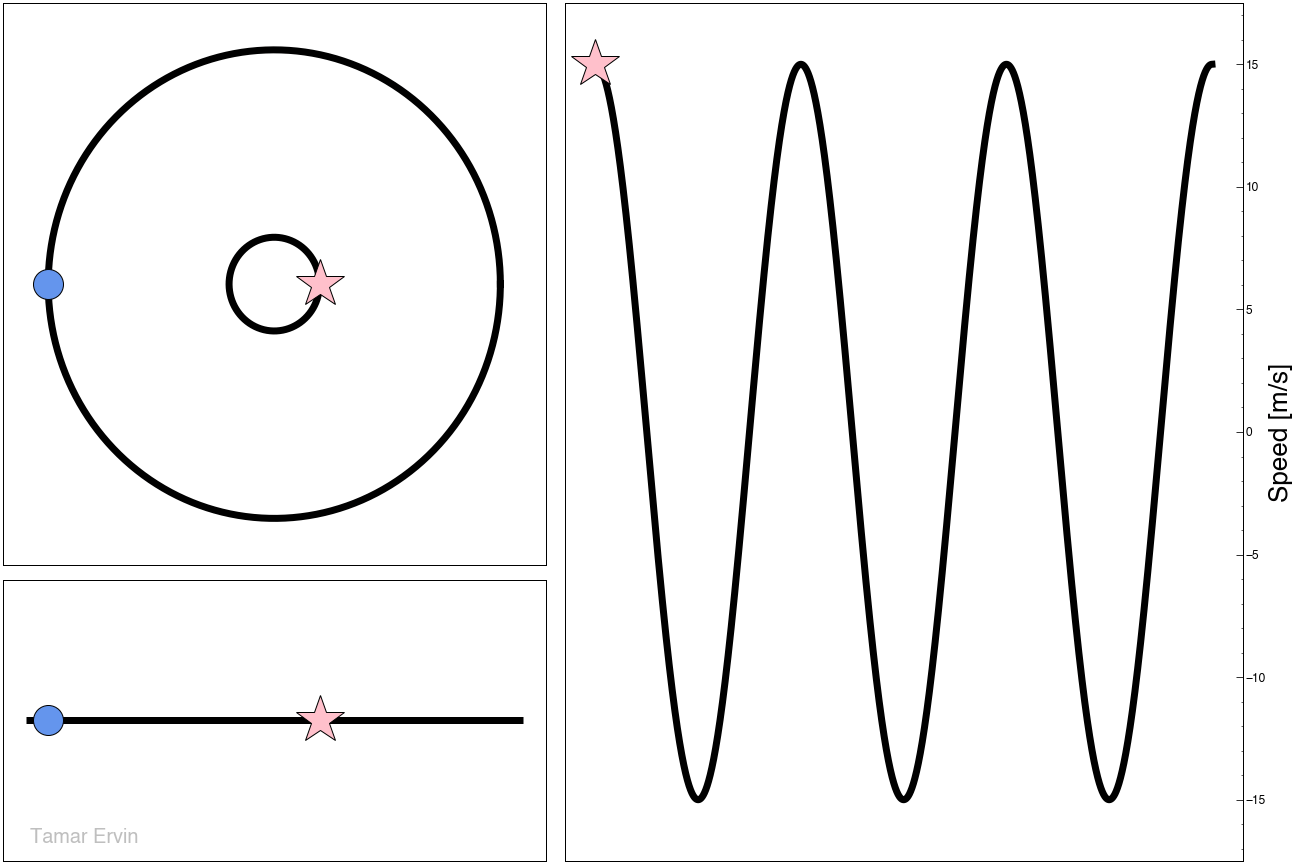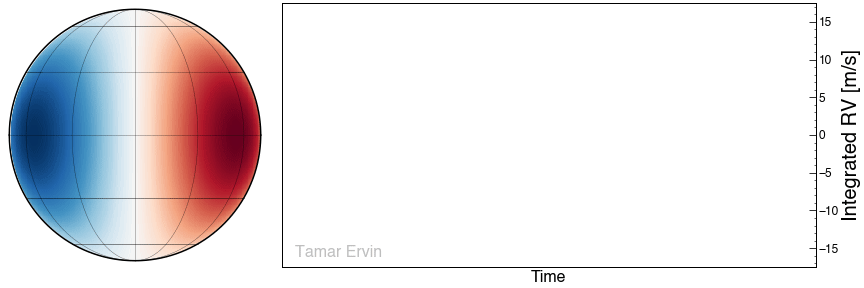SolAster
Welcome to the documentation site for the SolAster package. SolAster independently calculates 'Sun-as-a-star' radial velocity variations using data from the Helioseismic and Magnetic Imager (HMI).
Additional information can be found by navigating through the links on the left.
For the source code check out our GitHub!
Radial Velocity Method
The radial velocity (RV) technique searches for periodic Doppler shifts in stellar spectra induced by the presence of a planetary companion. To detect Earth-like planets orbiting Sun-like stars, improvements in RV measurement precision are required to push beyond the current 1 m/s measurement floor down to the 10 cm/s level. Stellar activity signals can mask or even masquerade as planetary signals and must be modeled and removed to reach the sensitivity required to detect Earth-like planets.

Methodology
Using a combination of data products from the Helioseismic and Magnetic Imager (HMI) aboard the Solar Dynamics Observatory (SDO), we develop a data analysis pipeline that is aimed at complimenting future extreme-precision RV (EPRV) studies of the Sun. The pipeline uses SDO/HMI data products to better characterize a suite of solar magnetic activity parameters, and performs a simple decorrelation analysis on disk-integrated RV measurements. Using high resolution data, we automatically calculate “Sun-as-a-star” RV variations as a combination of individual velocity components that serve as a strong proxy for surface magnetic activity, providing a independent window into the stellar surface that can aid in interpreting ground-based RV measurements.
There are two primary activity effects that strongly impact the measured RV: the velocity variation due to the traversing motion of sunspots and faculae across the rotating solar surface (photometric effect), and the variation due to the suppression of the convective blueshift by active regions (convective effect) . Building upon methods from Haywood et al. (2016) and Milbourne et al. (2019), we independently calculate these velocity components for comparison with solar observables and ground-based measurements.
Application to planetary transits
We apply these methods to recover the corresponding Rossiter–McLaughlin (RM) signals due to the transits imaged by SDO. We apply our pipeline methods to these time frames in the attempt to recover the effect of the planetary transits and empirically estimate the precision floor of our constructed ‘Sun-as-a-star’ RVs.
